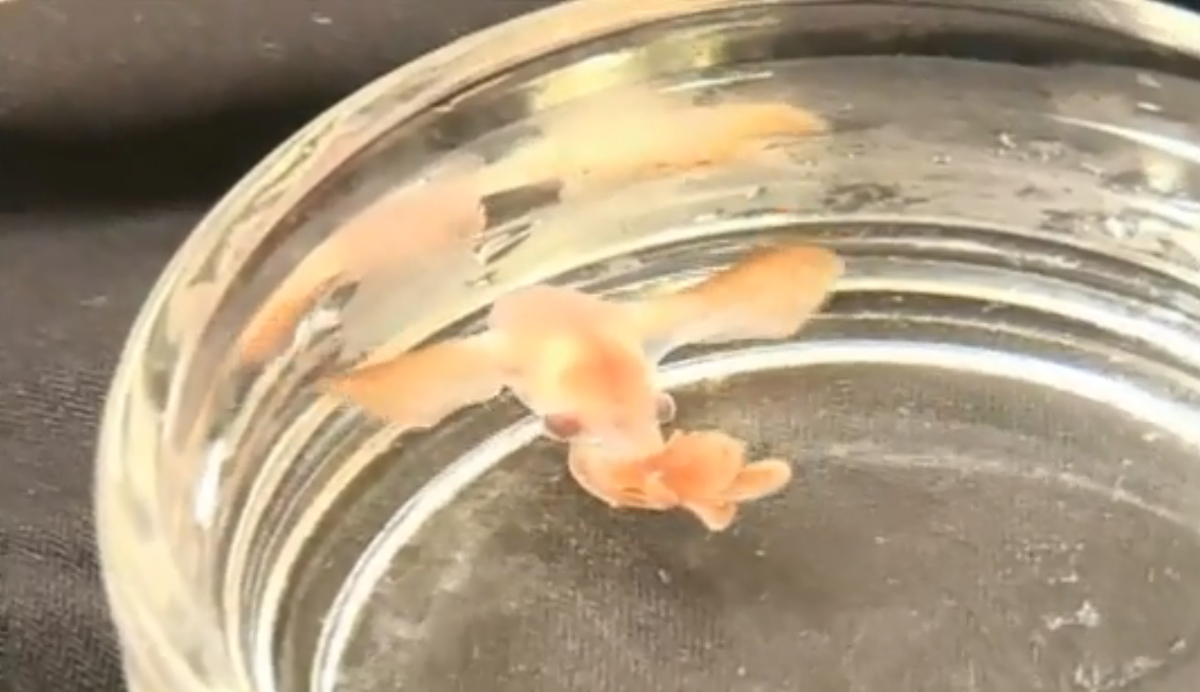For the first time, scientists have witnessed the birth of one of the ocean's strangest creatures: a dumbo octopus.
While on a research cruise east of Cape Cod in 2005, marine biologist Tim Shank was remotely operating an underwater vehicle to collect coral. He noticed something hiding in the coral that looked like a set of smooth, tan golf balls.
He collected the little spheres and brought them to the surface. Once inside the facility, he noticed that one of them was opening. Shank filmed the opening and saw that it had contained a tiny dumbo octopus.

The Dumbo octopus is named for Disney's animated elephant character because the octopus looks like it has big floppy "ears." The "ears" on the side of the animal's head are actually fins that it uses to propel itself forward, instead of crawling on the seafloor like fin-less octopi.
This hatchling had the honor of being the first dumbo octopus ever witnessed hatching and published in a scientific journal. That's because this species lives thousands of feet under the ocean, and on the occasions when research vehicles explore their habitats, the eggs are intentionally well-hidden among the coral. "If an egg is able to be disguised long enough, then it has a better chance of surviving to adulthood without being eaten," Elizabeth Shea, curator of mollusks at the Delaware Museum of Natural History told Newsweek. Shea was also one of the authors of the study, which was published in the journal Current Biology.

Shank knew that the specimen was important and there wouldn't be many more like it, so he knew he had to get it preserved as a young hatchling. Shea says she isn't sure how this individual died, but that researchers generally treat the animals "very gingerly" when killing them for further study. Once the scientists preserved the dead animal, they sent it to a scientist in Germany who performed an MRI on it. The MRI allowed the scientists to look inside the specimen and analyze its anatomy without cutting it open.
"We wanted to make sure that it would be cared for forever, so the next generation of scientists, if they wanted to look at it it would be preserved," Shea explained. "That's the great thing about the MRI technology, is that we didn't have to destroy the specimen to get all this information."
The rare specimen is critically important in improving our understanding of dumbo octopods, Shea says. "From a biological perspective, this is kind of connecting the dots in an otherwise somewhat poorly-understood group of organisms," she said.
Uncommon Knowledge
Newsweek is committed to challenging conventional wisdom and finding connections in the search for common ground.
Newsweek is committed to challenging conventional wisdom and finding connections in the search for common ground.
About the writer
Kristin is a science journalist in New York who has lived in DC, Boston, LA, and the SF Bay Area. ... Read more
To read how Newsweek uses AI as a newsroom tool, Click here.








